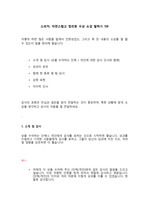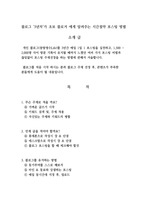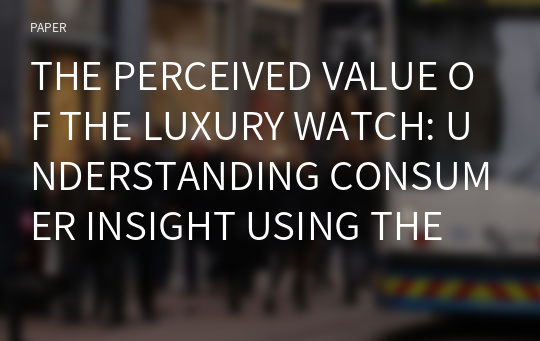THE PERCEIVED VALUE OF THE LUXURY WATCH: UNDERSTANDING CONSUMER INSIGHT USING THE MEANS END CHAIN APPROACH
* 본 문서는 배포용으로 복사 및 편집이 불가합니다.
서지정보
ㆍ발행기관 : 글로벌지식마케팅경영학회(GFMC)
ㆍ수록지정보 : Global Marketing Conference
ㆍ저자명 : Pakamon Puttipinyo, Phallapa Petison
ㆍ저자명 : Pakamon Puttipinyo, Phallapa Petison
영어 초록
Understanding consumer insight in luxury watch purchase is crucial in the current situation where the industry is recovering from a downturn. Today, the consumer does not only purchase a luxury watch to impress others as in the past. Using the means end chain approach, this study discovers that branding, together with design, function and price are key attributes that customers consider. Consequently, the consumer benefits from having a sense of personal identification. In addition, today the consumer perceives the benefit of luxury watch purchase as an investment. Therefore, they seek product distinction, durability, and a value-work product, in order, to serve the perceived value of capital investment. The results of the study reflect a changing trend in the luxury consumer. Prestige value is not the only key factor determining the purchase decision as was found in previous studies. Therefore, the luxury watch players, in an effort to elicit increased sales, should consistently build the brand profile by offering both functionality and design. Furthermore, communication of focus on quality leads to durability that would be considered as an investment asset from generation to generation.Introduction
In the luxury watch industry, despite the start of a recovery, from a downward trend, the growth rate is forecast to be at a slow pace (ReportLinker, 2017; Deloitte, 2016). The global luxury watch players face the challenge of decreasing demand as per the change in consumer behavior (Financial Time, 2017). Like other luxury goods, the luxury watch is considered as a product that is not entirely necessary but the drive behind the buying intention is due solely to the personal desire of the consumer In addition, individual perception as well as consumer purchasing power, has a strong link with decision making. Why a consumer buys a luxury watch today is rather different from why they bought one ten years ago (Adams, 2017). This study is conducted in order to understand luxury watch consumer insight using the means end theory, in ways of appropriation, and examine variations in consumer willingness-to-pay (Gengler & Mulvey, 2017).
Luxury consumption behavior
There are numerous studies to be found that explore luxury product consumption starting from extrinsic themes like consumer purchasing power (e.g. Veblen, 1899), consumer characteristics (e.g.Dubois & Laurent, 1993); (O'cass & McEwen, 2004), consumer behavior (Vigneron & Johnson, 1999; Kastanakis, & Balabanis, 2012) to intrinsic themes like consumer motivation (e.g.Xiao-hui, 2006; Truong & McColl, 2011), consumer perception (e.g. Zhan & He, 2012; Vigneron & Johnson, 2017) and at a more subjective level of consumer value (Sukhdial, Chakraborty, & Steger, 1995; Moraes, Carrigan, Bosangit, Ferreira, & McGrath, 2017; Vigneron, & Johnson, 2017). This is because the nature of the consumer has changed. The current consumer does not view purchasing a luxury item as a vehicle to impress others but much more to serve their own perspectives (Wiedmann, Hennigs & Siebels, 2009). Thus to cope with this downtrend, it is necessary, nowadays, for luxury brand suppliers to have a deep and detailed understanding of customer insight.
Means end chain theory (MEC) and laddering
MEC has been regarded as one of the most felicitous theories in consumer research since 1980 (Grunert et al. 2001). It was developed to help understand consumer insight in the decision making process (Gengler, Mulvey, & Oglethorpe, 1999) starting from how the consumer thinks about a product and why they buy it. Through MEC (Olson and Reynolds, 1983; Gutman, 1982; Howard, 1977; Young and Feigin, 1975), the researcher and marketer can discover the salient meanings consumers associate with products, both in services and behavior. The chain explains the linkage; starting from attributes through to consequences, and then to values in the form of a hierarchial model Gutman, 1982; Gengler, Mulvey, & Oglethorpe, 1999; Leao and Mello, 2007). Beginning with the first level, attributes are characteristics of the product/service the consumer is expecting which can be both tangible and non-tangible features. However, attributes will mean nothing to the consumer, without so called consequences (Klenosky, 2002). At the second level of the hierarchical model, consequences are benefits that take part in explaining why those attributes are important to consumers (Olson and Reynolds, 1983). The consumer is looking for particulars benefits when purchasing that certain product or service (Voss and Gruber, 2006). The final level is value. The consumer judges the benefit of the product based on the perceived value, in the mind of the customer (Gutman, 1982; Olson and Reynolds, 1983; Costa, Dekker, and Jongen, 2004). It is notable that the higher the hierarchial level, the greater the level of abstraction (Woodruff & Gardial, 1996). Using the MEC helps gain consumer insight information which allows the luxury brand supplier to offer products which are best suited for their targeted consumers (Petison, Thongthou and Lekmoung, 2012).
Methodology
By its nature, the MEC is adopted as a qualitative research method. In order to understand why a consumer is interested in a product and makes a purchasing decision (Smith and Swinyard, 1999); the decision making process can be revealed using the laddering interview (Gutman, 1982; Olson & Reynolds, 1983; Ozguven, 2012). Through the laddering interview, researchers decide to apply a soft laddering interview; an open answer question, rather than hard laddering interview; or a fixed answer question, to enjoy the benefits of go by the flow (Ozguven, 2012). Furthermore, soft laddering interview is well suited to the elite in a sense that interviewer can adjust questions depending on answers and ambience (Harvey, 2011). In this study a total of 30 luxury watch consumers; 18 females and 12 males, who recently bought luxury watches in 2017 were interviewed. This is because the researchers want to obtain the most up to date information. This group of consumers tended to purchase a luxury watch every year. The most popular brands these consumers purchased are Rolex, Patek Philippe, Panerai and Audemars Piguet. In face to face time, a semi structure interview was applied based on Reynolds and Gutmam (2001), who suggested questions such as; What affects your purchasing decision?, How do you feel about the product? Why do you want to wear this watch? etc. All interviews were recorded and verbatim transcripts produced. Content analyses were applied following the interviews. The preliminary categorization was into groups of attribute consequence and value, and recurring words with similar meanings collected in clusters. Research triangulation was applied to ensure validity. The researchers created a hierarchical value chain for each consumer then analyzed the findings by using LaddermapTM software.
Results
According to the content analysis process, a total of 28 attributes, 22 consequences, and 15 values were found in the study. Through the LaddermapTM software analysis only 7 attributes, 11 consequences, and 9 values can be reported as in figure 1.
Figure 1: Hierarchial value map of luxury watch purchase
Brand is the most important attribute from the viewpoint of the luxury consumer followed by design, price and function. For example, one consumer mentioned that “…brand helps one who wears it by identification…it reflects a certain lifestyle…wearing a Rolex is easy to take care of because of its quality as well as the ease to wear on any occasion…it is value for money… but more than this as it constantly appreciates in value.…” In addition, brand is a key attribute that leads to two most important consequences which are personal identification and investment. However, impressing others, which used to be a key rationale for purchasing luxury product is found to be absent from the top consumer benefits nowadays. However, today, luxury brand consumers are more concerned with distinction, durability, and value-work product as a consequence of watch purchase. For example, one consumer said that “…normally, women do not wear Pannarai. I love to be different…so I bought a limited edition….I wear it constantly for both work and leisure activities…although the price is high, I feel secure with the price paid…it has a warranty and good after- sales service…” Among reported values, monetary satisfaction is found to be the most the important followed by self- image and pleasure. For example, one consumers said that “…I always buy Rolex…my parents also use Rolex. From my parent’s experience of use, it was made aware that the Rolex is fabulous due to its quality and resale price. …I have never ever changed my mind about Rolex…it is excellent value as an investment…I am happy and satisfied with the money I have spent…” This study also found other consumers who expressed their satisfaction with money invested in comparison with another investment options such as gold or stocks. Moreover, it is an investment that can be passed on to their children.
Discussions and Implications
Nowadays, brand, design, price and function are the key attributes that luxury consumers focus on. Luxury brand suppliers should pay particular attention to a design that reflects the unique identity of the brand and distinguishes it from competitors. This is a consistent finding of Subhadip, Jain, &Matta (2018) that the luxury product ought to reflect its own creativity, artistry, and uniqueness. Moreover, consumers prefer a luxury watch that offers various functions that they can be used with ease on any occasion. In addition, the luxury consumer does not only purchase a watch that represents their self-image and bring in pleasure value, but also monetary satisfaction which is found to be most important nowadays so that the luxury watch player should advertise their brand based on this distinctive study finding. Durability is a reflection of quality brand. Warranty is the linkage between quality and value for money. Monetary satisfactory also comes from the benefits of investment and a generation to generation heritage.
참고 자료
없음"Global Marketing Conference"의 다른 논문
 THE ROLES OF GREEN PACKAGING IN UGLY FOOD PURCHASE INTE..22페이지
THE ROLES OF GREEN PACKAGING IN UGLY FOOD PURCHASE INTE..22페이지 THE IMPACT OF INDUCED AWE ON ETHICAL TOURIST BEHAVIORS5페이지
THE IMPACT OF INDUCED AWE ON ETHICAL TOURIST BEHAVIORS5페이지 A BIBLIOMETRIC ANALYSIS OF SPIRITUAL TOURISM RESEARCH15페이지
A BIBLIOMETRIC ANALYSIS OF SPIRITUAL TOURISM RESEARCH15페이지 SOCIAL NETWORK ANALYSIS AND RESPONSE TIME TESTING: CONS..11페이지
SOCIAL NETWORK ANALYSIS AND RESPONSE TIME TESTING: CONS..11페이지 THE EFFECTS OF PARA-SOCIAL INTERACTION ON ONLINE CELEBR..3페이지
THE EFFECTS OF PARA-SOCIAL INTERACTION ON ONLINE CELEBR..3페이지 THE INFLUENCE OF OPINION LEADERS ON DAILY DEALS USER’S ..3페이지
THE INFLUENCE OF OPINION LEADERS ON DAILY DEALS USER’S ..3페이지 HOW IMMERSIVE RETAILING AFFECTS CONSUMERS’ URGE TO BUY:..6페이지
HOW IMMERSIVE RETAILING AFFECTS CONSUMERS’ URGE TO BUY:..6페이지 KEY TO SUPERSTARDOM IN A GLOBALISED MARKET: THE ROLE OF..6페이지
KEY TO SUPERSTARDOM IN A GLOBALISED MARKET: THE ROLE OF..6페이지 A POST-PANDEMIC LOOK AT TOURISTS’ PERCEIVED COOLNESS OF..4페이지
A POST-PANDEMIC LOOK AT TOURISTS’ PERCEIVED COOLNESS OF..4페이지 EXTRACTING OFFLINE RETAIL SHOPPING PATTERNS: OLLABORATI..5페이지
EXTRACTING OFFLINE RETAIL SHOPPING PATTERNS: OLLABORATI..5페이지


























